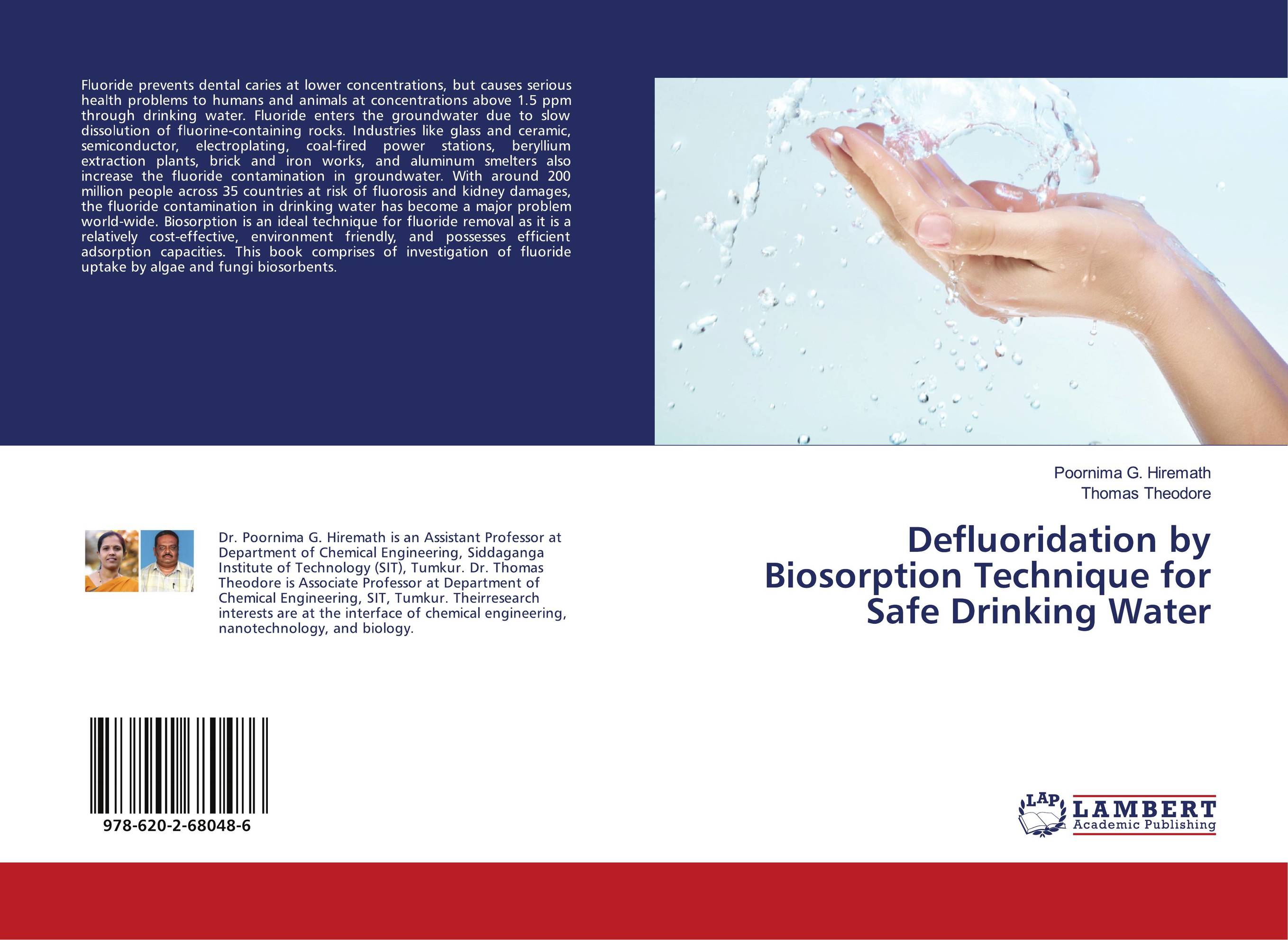| Поиск по каталогу |
|
(строгое соответствие)
|
- Профессиональная
- Научно-популярная
- Художественная
- Публицистика
- Детская
- Искусство
- Хобби, семья, дом
- Спорт
- Путеводители
- Блокноты, тетради, открытки
Defluoridation by Biosorption Technique for Safe Drinking Water.

В наличии
| Местонахождение: Алматы | Состояние экземпляра: новый |

Бумажная
версия
версия
Автор: Poornima G. Hiremath and Thomas Theodore
ISBN: 9786202680486
Год издания: 2020
Формат книги: 60×90/16 (145×215 мм)
Количество страниц: 84
Издательство: LAP LAMBERT Academic Publishing
Цена: 24061 тг
Положить в корзину
| Способы доставки в город Алматы * комплектация (срок до отгрузки) не более 2 рабочих дней |
| Самовывоз из города Алматы (пункты самовывоза партнёра CDEK) |
| Курьерская доставка CDEK из города Москва |
| Доставка Почтой России из города Москва |
Аннотация: Fluoride prevents dental caries at lower concentrations, but causes serious health problems to humans and animals at concentrations above 1.5 ppm through drinking water. Fluoride enters the groundwater due to slow dissolution of fluorine-containing rocks. Industries like glass and ceramic, semiconductor, electroplating, coal-fired power stations, beryllium extraction plants, brick and iron works, and aluminum smelters also increase the fluoride contamination in groundwater. With around 200 million people across 35 countries at risk of fluorosis and kidney damages, the fluoride contamination in drinking water has become a major problem world-wide. Biosorption is an ideal technique for fluoride removal as it is a relatively cost-effective, environment friendly, and possesses efficient adsorption capacities. This book comprises of investigation of fluoride uptake by algae and fungi biosorbents.
Ключевые слова: Defluoridation, algae, fungi, Chlorella Vulgaris, Chlorella protothecoides, Nannochloropsis oculata, Spirulina Platensis, Penicillium camemberti SIT-CH-1, Aspergillus ficuum SIT-CH-2, Aspergillus terreus SIT-CH-3, Aspergillus flavipes SIT-CH-4, Biosorption, Immobilization, Calcium alginate beads, batch studies, isotherm, kinetics, regeneration, column studies



